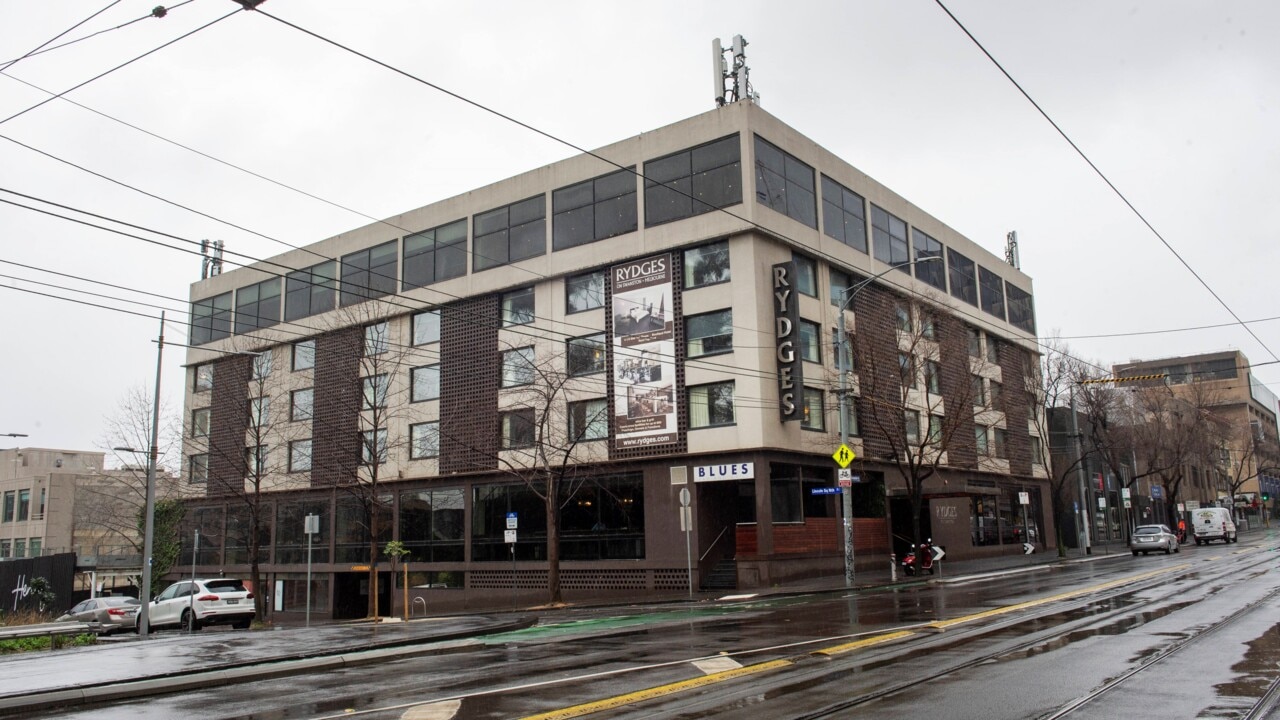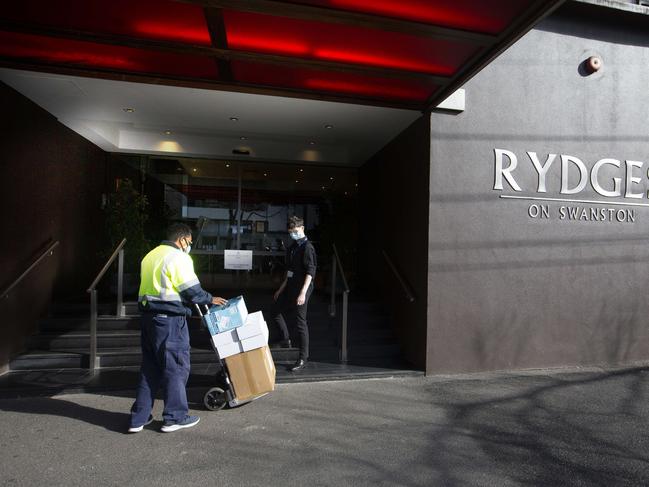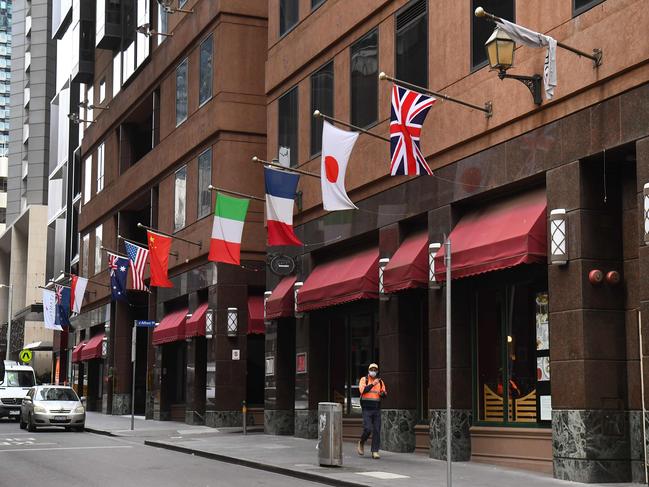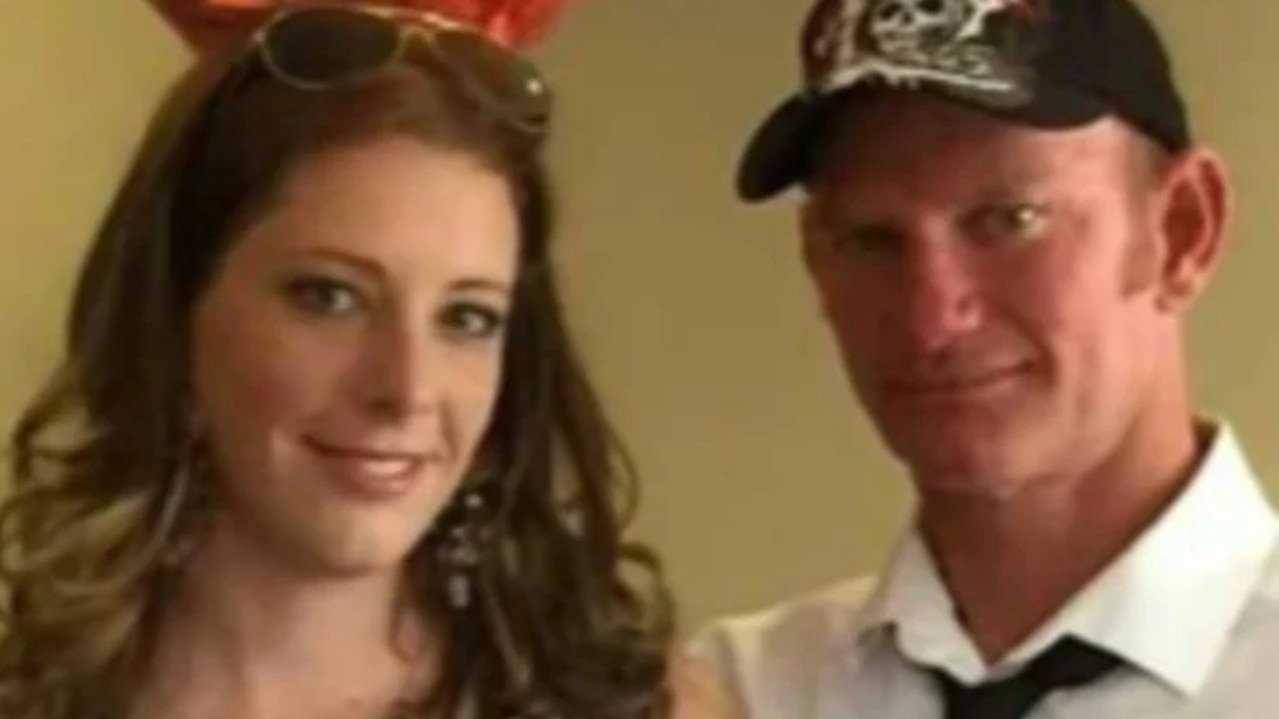Rydges, Stamford Plaza hotels source of Victoria’s COVID-19 outbreak
About 90 per cent of COVID-19 cases can likely be traced to a family who quarantined at Rydges, not leaving the hotel during their stay.

About 90 per cent of Victoria’s COVID-19 cases are likely traceable back to one family who quarantined at Melbourne’s Rydges Hotel in Swanston St, an inquiry has heard.
But precisely how the virus escaped from hotel quarantine remains a mystery, with investigators unable to pinpoint the moment of transmission.
The remaining cases in the state are likely connected to another quarantine hotel, the Stamford Plaza, an expert says, with 99 per cent of all current cases linked to the bungled hotel quarantine program.
Giving evidence to the Melbourne hotel quarantine inquiry on Tuesday, epidemiologist Dr Charles Alpren said the department of health had concluded almost all cases circulating in the state could be linked back to the hotels.
The Stamford Plaza outbreak has two origins, one man and a couple who quarantined there.
MOMENT OF TRANSMISSION A MYSTERY
The moment the virus was transmitted from the family to staff members remains unknown. It could have been a direct transmission of the virus, or picked up from surfaces, Dr Alpren said.
There were two instances of contact identified in his report: the family was approved to walk outside their room, during which time they were accompanied by security guards, and nurses had to assist the family after a contamination issue in their room on May 18.
But no cases have been identified from either of these two events, Dr Alpren said.
He had no information about how the virus in positive cases at Stamford Plaza spread out into the community.

WHERE THE CASES CAME FROM
The family of four returned to Australia on May 9 and entered quarantine. After they all developed symptoms they were moved to the Rydges Hotel on Swanston St on May 15.
On May 25, three staff members developed symptoms and were diagnosed with COVID-19, Dr Alpren said, later saying he believed the three people included both staff at Rydges and external contractors.
By the end of the month, the department received data suggesting the first confirmed COVID-19 case in a staff member was connected to the family.
The family did not leave the hotel during their stay and were supervised when outside their room, Mr Alpren said.
At the Stamford Plaza hotel, the data shows the outbreak can be traced back to two separate origins, one man and a couple, who were quarantined at the hotel.
There were only two isolated exceptions to the hotel clusters identified by the department, involving four people in total, his statement said.
Mr Alpren added as he gave evidence there was a third exception: an asymptomatic case detected on June 19 that was genomically linked to the virus circulating in March.
Although a large number of cases have not been genomically sequenced, Mr Alpren said he could be very certain based on the available data that the vast majority were linked back to the hotels.

EXPERTS TO JOIN DOTS
The inquiry has been set up to consider what went wrong in the bungled scheme, in which private security firms were contracted by the Victorian government to guard quarantined guests.
On Monday, Doherty Institute professor Ben Howden told the inquiry genomic data suggested more than 99 per cent of Victoria’s current cases stemmed from returned travellers in clusters that emerged in mid-May, as the early wave of the virus died out.
Hotel quarantine was in place from late March, suggesting breaches of the system were the origin of the current outbreak.
Dr Alpren, who manages, analyses and reports COVID-19 data as part of his work in the Intelligence section of the Victorian COVID-19 response, is expected to join the dots, the inquiry heard Monday.
Genomic data allows for clusters to be identified by looking at the genetic code of virus samples, which “essentially act as a passport stamp” allowing scientists to trace where it came from.
Epidemiology looks at how a disease moves in the community, taking into account where a person lives, who they have contact with and risk factors.
Combined, the two branches “allow us to provide very strong inferences of how a disease is transmitting or moving”, Mr Howden said.
After one day of evidence the inquiry has already revealed government agencies were confused about who was ultimately in charge of running hotel quarantine, which was set up in just 48 hours.
An expert also labelled two sets of advice on personal protective equipment given to security staff at the hotels — one from the federal government, the other from the Victorian department of health — as “inappropriate” and “inaccurate”.

